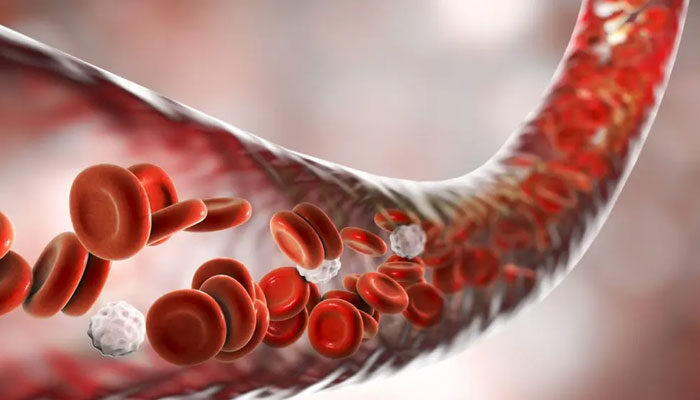Hope for elderly, diabetics: China-led study finds way to reverse vision loss
BEIJING: A joint study by researchers from China and Australia has developed a new treatment that could prevent hundreds of millions of people from losing their eyesight – without the need for ongoing injections into their eyes.
“Our new approach aims to reduce the treatment to just one injection. Its efficiency is much higher than existing drug delivery methods,” said Tian Ying, an ophthalmologist at the Beijing Chaoyang Hospital and lead author of the study, which was published in the journal Nature Biomedical Engineering.
While most of the work was conducted in China, Yu Di, a leading immunologist with the University of Queensland, was pivotal in pioneering the team’s research into whether the exosome could provide a suitable treatment. Tian said the Australian researcher’s “guidance has played a key role” in bringing the idea to life.
She also said the political tensions between China and Australia – which are at their highest in decades – had not affected their collaboration. In the short term, the study’s findings suggest current treatments for conditions like macular degeneration and diabetic retinopathy can be made more effective and the number of injections into the eye reduced to just one.
About 450 million people worldwide are affected by loss of vision due to age or chronic disease. It was once regarded as a natural process, but in recent years scientists have found most of the blindness is caused by an excessive growth of new blood vessels at the back of the eye.
Exactly why an ageing eye rapidly grows blood veins remains unclear, but stopping the process could help restore light to many elderly or diabetic patients. The growth of young blood vessels relies heavily on a protein known as vascular endothelial growth factor (VEGF). Some pharmaceutical companies have developed antibodies that can be injected into the eye and bind with the VEGF protein.
However, the therapy is effective for only 40-60 percent of patients and repeated shots are often required, leading to a higher risk of eye damage and prolonged suffering. Around the world, medical researchers are racing to develop better treatments for these eye problems that can confront almost anyone at some time in their lives.
When analysing samples from eye patients, Tian and her colleagues from the Chinese Academy of Sciences found the antibody treatment was not enough. The eyes of many elderly or diabetes patients contained not only more blood vessels but also molecules related to inflammation. Scientific evidence had already suggested eyesight loss is closely linked to inflammation. Other research teams have tried injecting a combination of the antibody and anti-inflammatory medication into the eye, but with little effect.
This is partly because the eye contains a lot of water, making it difficult for the antibody to find and bind with the protein that promotes blood vessel growth. The inflammation-suppressing drugs were also unable to reach the swollen tissues.
“To solve the problem, we need to think beyond the eyes,” Tian said in a telephone interview on Wednesday. In cancer studies, researchers have been using an exosome – a molecule produced by T cells – to quickly find and tame the overly active immune cells which cause inflammation. But, Tian said, the exosome had never been used to treat eyes before.
-
 Kim Kardashian Shares One Regret She Wishes Had Not Happened
Kim Kardashian Shares One Regret She Wishes Had Not Happened -
 Why Blake Lively Claims 'It Ends With Us' 'nearly Killed' Her?
Why Blake Lively Claims 'It Ends With Us' 'nearly Killed' Her? -
 Brooklyn Beckham’s Statement Gets Run Over: ‘You Wouldn’t Have Any Of This Yourself’
Brooklyn Beckham’s Statement Gets Run Over: ‘You Wouldn’t Have Any Of This Yourself’ -
 Princess Beatrice Follows Eugenie Into Anguish As Their ‘York Greek Tragedy’ Threatens Family Further
Princess Beatrice Follows Eugenie Into Anguish As Their ‘York Greek Tragedy’ Threatens Family Further -
 Prince Harry Urges His Pals Are ‘not Leaky,’ He Is Not ‘Mr Mischief’
Prince Harry Urges His Pals Are ‘not Leaky,’ He Is Not ‘Mr Mischief’ -
 What Prince William And Kate Think Of Brooklyn's Attack On Victoria And David Beckham?
What Prince William And Kate Think Of Brooklyn's Attack On Victoria And David Beckham? -
 Meghan Trainor Reveals Why Surrogacy Was The 'safest' Choice
Meghan Trainor Reveals Why Surrogacy Was The 'safest' Choice -
 Victoria Beckham Supports Youngest Son In First Move Since Brooklyn's Rebellion
Victoria Beckham Supports Youngest Son In First Move Since Brooklyn's Rebellion -
 'Percy Jackson' Star Feels Relieved After Season Two Finale
'Percy Jackson' Star Feels Relieved After Season Two Finale -
 Jelly Roll Reveals How Weight Loss Changed Him As A Dad: 'Whole Different Human'
Jelly Roll Reveals How Weight Loss Changed Him As A Dad: 'Whole Different Human' -
 Prince Harry Gets Emotional During Trial: Here's Why
Prince Harry Gets Emotional During Trial: Here's Why -
 Queen Camilla Supports Charity's Work On Cancer With Latest Visit
Queen Camilla Supports Charity's Work On Cancer With Latest Visit -
 Dove Cameron Opens Up About Her Latest Gig Alongside Avan Jogia
Dove Cameron Opens Up About Her Latest Gig Alongside Avan Jogia -
 Petition Against Blake Lively PGA Letter Gains Traction After Texts With Taylor Swift Revealed
Petition Against Blake Lively PGA Letter Gains Traction After Texts With Taylor Swift Revealed -
 Netflix Revises Warner Bros. Deal To $83 Billion: All-cash Offer
Netflix Revises Warner Bros. Deal To $83 Billion: All-cash Offer -
 Prince Harry Mentions Ex-girlfriend Chelsy Davy In UK Court
Prince Harry Mentions Ex-girlfriend Chelsy Davy In UK Court




